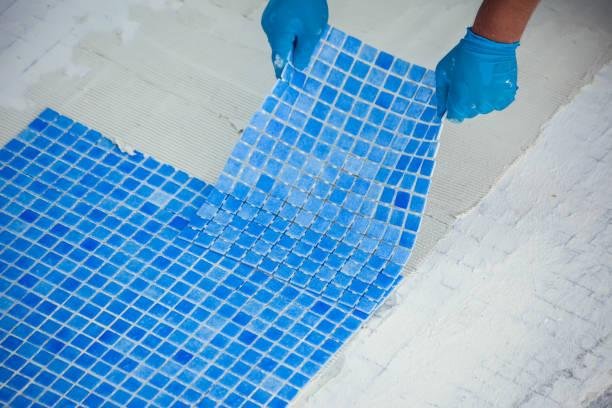Introduction: Decoding the Waterproofing Process
In the realm of construction and infrastructure, the waterproofing process stands as a crucial guardian against the relentless assault of moisture, safeguarding structures from potential damage. At its core, this intricate process involves fortifying surfaces to resist the infiltration of water, ensuring the longevity and integrity of buildings.
Understanding the Essentials
What is Waterproofing?
Applying specialised materials to surfaces to provide an impermeable barrier against water infiltration is the laborious process known as waterproofing. It’s a proactive approach to preventing the damaging impacts of water, such as mould growth, structural deterioration, and weakened durability, rather than only a preventive technique.
Types of Waterproofing Techniques
1. Chemical Waterproofing
This method involves coating surfaces with a layer of water resistance by using sophisticated chemical compounds. The chemicals create an impermeable barrier by penetrating deeply into the substrate. Chemical waterproofing works quite well, particularly in regions that frequently get high rainfall.
2. Membrane Waterproofing
Utilizing specialized membranes, this technique involves the application of sheets or coatings that act as an impervious shield against water. Membrane waterproofing is commonly employed in flat roofs, basements, and areas with high moisture exposure.
3. Cementitious Waterproofing
Incorporating cement-based mixtures, this method creates a rigid, durable waterproofing layer. Cementitious waterproofing is ideal for structures where flexibility is not a primary concern, such as basements and underground spaces.
4. Bituminous Waterproofing
Derived from bitumen, this technique involves the application of asphalt-based materials to create a water-resistant layer. Bituminous waterproofing is widely used for its durability and effectiveness in areas susceptible to temperature fluctuations.
The Waterproofing Process Unveiled
1. Surface Preparation
Before delving into the application of waterproofing materials, meticulous surface preparation is paramount. This involves thorough cleaning, removal of debris, and addressing any existing structural issues.
2. Primer Application
A crucial step in the process, the application of a high-quality primer enhances adhesion, ensuring that the waterproofing material bonds seamlessly with the substrate.
3. Material Application
Depending on the chosen waterproofing technique, the application of materials follows. Whether it’s the precise application of chemical compounds, laying membranes, or coating surfaces with cementitious mixtures, precision is key.
4. Quality Assurance
Post-application, a comprehensive quality check is conducted to verify the effectiveness of the waterproofing. This step may involve water tests, inspections, and meticulous evaluations to guarantee the longevity of the protective layer.
Advantages of Professional Waterproofing
1. Longevity
Professional waterproofing, executed with precision and expertise, extends the lifespan of structures by preventing water-induced damage.
2. Mold Prevention
Waterproofing acts as a formidable defense against mold and mildew, preserving indoor air quality and the health of occupants.
3. Structural Integrity
By fortifying surfaces against water penetration, waterproofing ensures the structural integrity of buildings, preventing cracks, leaks, and potential collapses.
Conclusion: Elevating Structural Resilience through Waterproofing
In conclusion, the waterproofing process is not merely a construction requirement; it’s a strategic investment in the durability and longevity of structures. From chemical applications to membrane installations, each technique plays a crucial role in fortifying surfaces against the ever-present threat of water infiltration.
In the dynamic landscape of construction, where structural integrity is non-negotiable, embracing professional waterproofing is a proactive measure that pays dividends in the long run. It’s not just about averting potential damage; it’s about fostering a robust, water-resistant shield that stands as a testament to the endurance of modern construction practices.
What is waterproofing procedure?
Frequently Asked Questions (FAQs)















